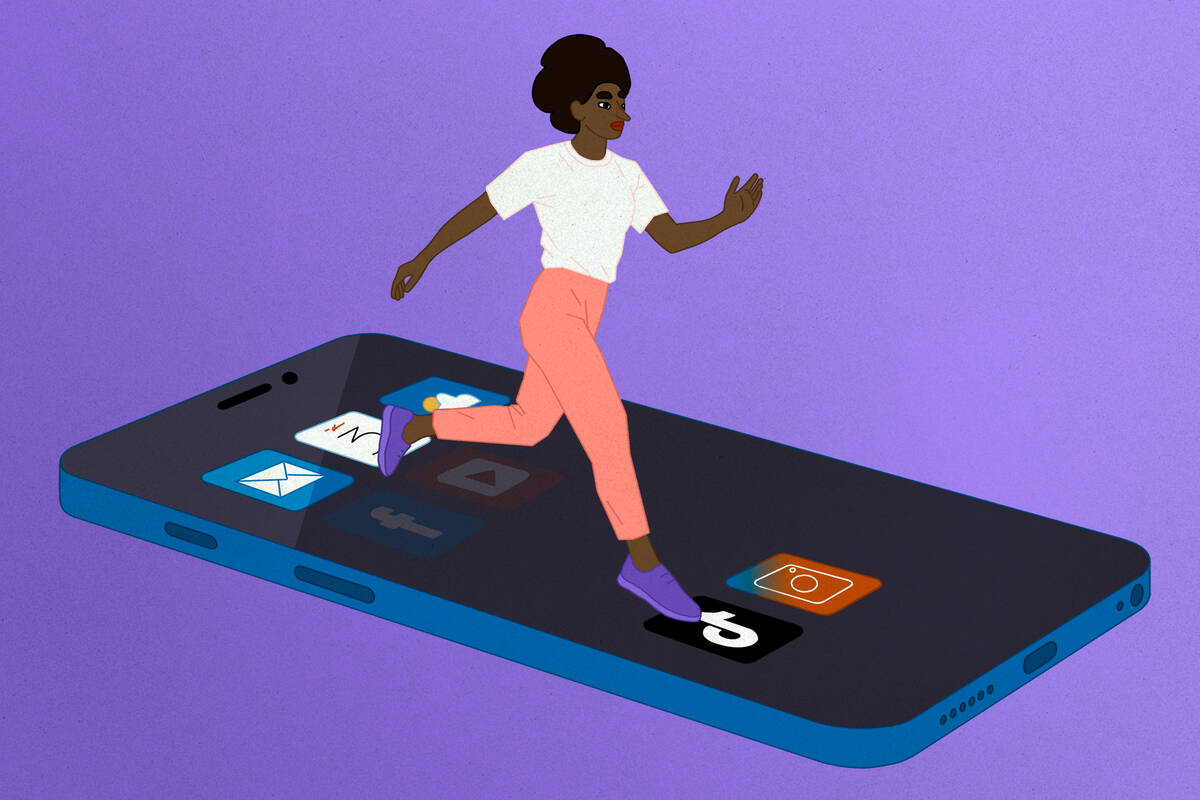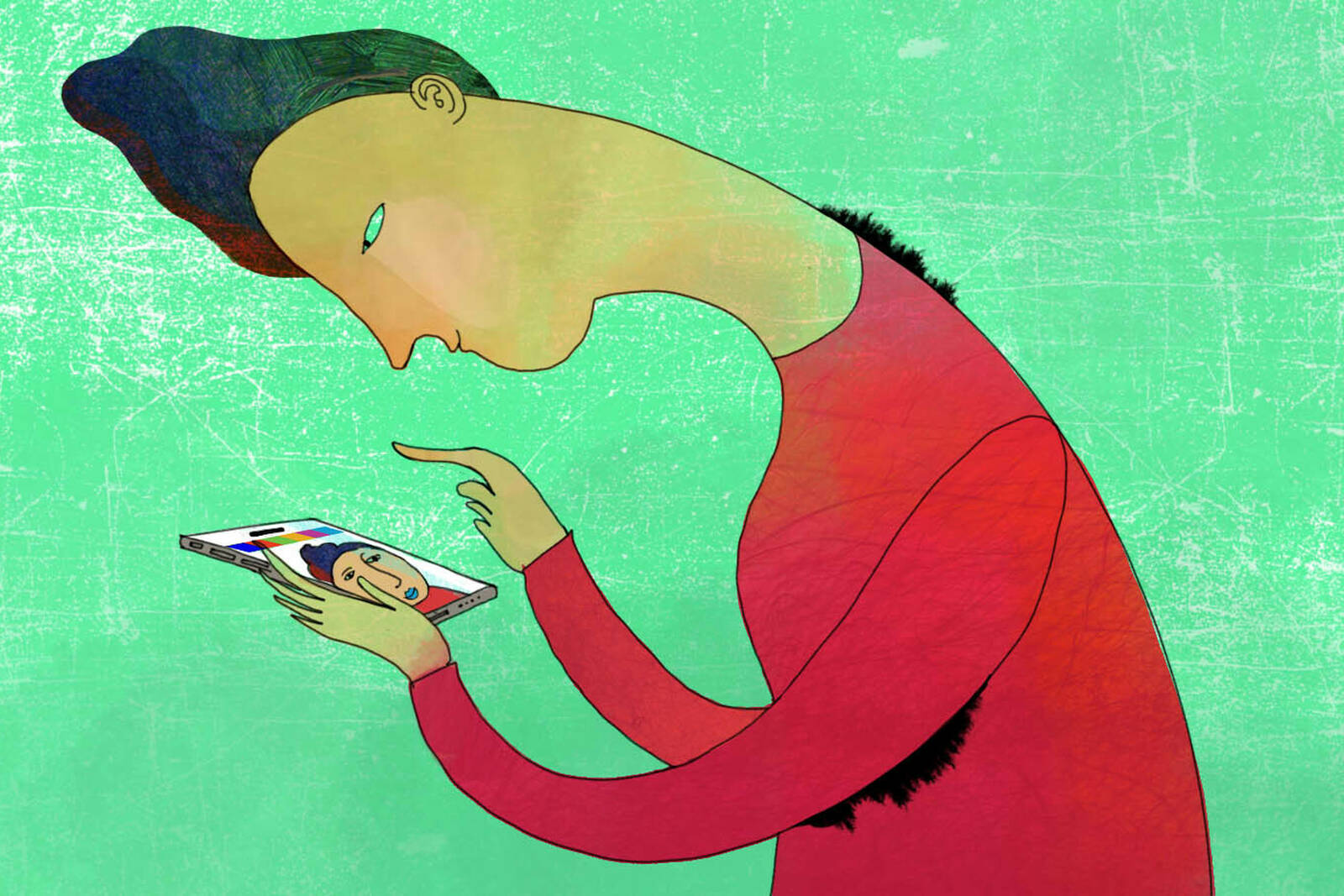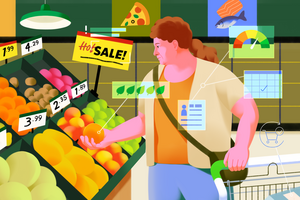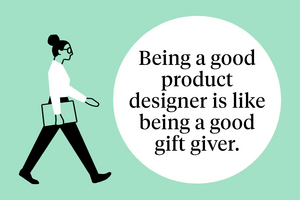Marketing Feb 6, 2023
If Your Favorite App Disappeared, How Would You Spend That Time?
Knowing whether users migrate to other apps or simply cut back on screen time is critical for understanding competition in the “attention economy.”

Lisa Röper
What would you do if your favorite phone app changed for the worse—or perhaps disappeared altogether? While this has become a real-life question for many Twitter users, it is also a research question for Guy Aridor, assistant professor of marketing at Kellogg.
Presumably, you’d pick another activity to devote your time to, perhaps a different online destination. But understanding what this substitution looks like on a larger scale is tricky, in part because experts generally rely on prices to understand how consumers substitute one product or service for another.
“In an economics 101-style market, like for apples, if prices for some apples go up, we want to know, ‘do people substitute other kinds of apples, buy oranges, or stop buying fruit?’” Aridor says.
Yet there’s not an obvious price tag on most popular apps. Companies like Facebook, Twitter, and YouTube do not charge for access to their platforms but instead sell audience attention to advertisers within the so-called attention market.
So to better understand how app substitution works, Aridor ran an experiment to find out how consumers would react if they temporarily could not use Instagram or YouTube at all. Would people substitute another app of the same category, an app from a different category, or cut down on their app use overall?
Aridor found that people readily switched to other categories of apps, though this is in part because many apps span multiple categories: a social app can also be used for entertainment, for instance.
He also found that the habit-forming nature of digital apps, a force he calls inertia, plays an important role in which apps people chose as substitutes. “If you can’t use Instagram, you will be more likely to substitute with apps that you habitually use,” Aridor says. Or in lieu of bothering to download a brand new app, you might chose not to substitute with another app at all.
These insights are of obvious interest to tech companies and marketers, who would benefit from a better understanding of how consumers substitute one app for another, Aridor says. And antitrust regulators, who have struggled to define competitive markets when evaluating possible tech mergers, could also benefit.
Understanding app users’ behavior
While many popular apps do not explicitly charge for access to their platforms, there are nonetheless many ways that the “price” these apps charge could increase. “Facebook can set a price on users’ attention by increasing the number of advertisements in your feed. But the relevant price can also encompass product quality or privacy concerns,” Aridor says.
For a real-life example of how this could play out, look at Twitter. Since Elon Musk bought the company in October, he’s experimented with actual price increases, such as charging for an authenticated account, and nonmonetary price increases, such as a dramatic reduction in content moderation. How Twitter users will respond to these price increases is still an open question.
“If there’s a massive degradation in the quality of a product, users may migrate to niche application like Mastodon, spend more time on other leading applications, or spend more time off their phones altogether,” Aridor says.
Beyond Twitter, there are broader questions about how people might substitute for a specific app if the nonmonetary price of using it goes up.
“If I am an executive at Twitter or at Meta, are we really competing just with TikTok or also with YouTube?”
—
Guy Aridor
To gain insights into this phenomenon, Aridor recruited about 400 students from the U.S., Hong Kong, Italy, and Switzerland. The average age of these paid participants was 26. They all used Android phones to access YouTube, Facebook, Instagram, Snapchat, and WhatsApp.
Aridor had them download a parental control application on their phone, which enabled him to cut off their access to Instagram or YouTube as well as monitor how they were spending their time on the phone. (They were warned ahead of time that they might lose access to an app, but not specifically told it might be Instagram or YouTube.) They also downloaded a browser extension on their laptops to collect data on which websites they were using on their computers during the study. Aridor surveyed participants several times before, during, and after he cut off access to the apps, asking questions about how they spent their time off digital devices and for what they generally use different apps.
In the first week, Aridor collected baseline data on the time participants spent on WhatsApp, YouTube, Instagram, Facebook, Messenger, Reddit, Snapchat, TikTok, and Twitter. (Aridor characterized each app based on the category assigned to it on the Google Play Store. For example, Instagram and Facebook were categorized as social apps, while YouTube fell under entertainment. WhatsApp was labeled a communication app.)
Then one group of participants had either YouTube or Instagram restricted for one week, while restrictions for another group lasted two weeks. There was also a control group with no restrictions. Aridor collected data on users’ time spent on other apps during and after the restricted periods.
Participants who lost access to Instagram or YouTube spent less time overall on their phones. Those cut off from Instagram spent an average of 27 minutes less, while those bereft of YouTube spent 44 minutes less on their phones each day during the restricted period. And those who lost access to the apps for two weeks decreased their use more than those who only lost access for one week.
During the time they were on their phones, users did shift to other applications, Aridor found. Those who lost access to Instagram primarily shifted to other apps they were already using, while those who lost access to YouTube also shifted to less-prominent and new-to-them apps. And, interestingly, both groups—those who lost access to Instagram, a social app, and those who lost access to YouTube, an entertainment app—gravitated to other social apps.
While this implies that users will adopt a different category of application when looking for a substitute, it’s also important to point out that actual activities on the apps do not neatly match Google Play Store categories. For example, while Instagram is categorized as a social app, 37 percent of participants surveyed said they use it for entertainment.
Digital addiction alters the choice of app substitutes
Aridor also wanted to understand what factors caused participants to turn to one alternative app versus another. In particular, he wanted to know if inertia minimizes how often users seek out new, less prominent digital apps as substitutes.
Inertia is an umbrella term that includes users being “addicted” to specific apps, as well as other factors that can make a particular app a default destination, such as the time users have already invested in choosing, downloading, and setting it up.
Aridor estimated an economic model based on study participants’ past app usage to compute how users would have spent their time during the experiment had inertia not played a role.
The non-inertia model showed that users would have been more likely to seek out new-to-them substitute apps, rather than turning to prominent, already-used apps. Indeed, the model predicted that without inertia, the share of time users spent on prominent social-media and entertainment apps would have been about thirty percent less than what Aridor observed in the real world.
Using experiments to analyze competition
Aridor sees these sorts of “app exclusion” studies as having lots of potential to increase our understanding of digital markets.
“In the market for cereal, it’s really hard to run an experiment like this,” Aridor says. “You can’t make Rice Krispies disappear and see how people substitute. But with digital markets, everyone accesses apps through their own individual phone and so you can.”
Such experiments could, for instance, offer firms a more nuanced view of their competition for audience attention. “If I am an executive at Twitter or at Meta, are we really competing just with TikTok or also with YouTube?”
This information would also be useful for policymakers and government regulators. One area of active policy debate is how antitrust regulators can assess whether a merger of two major digital apps could create a monopoly and crowd out competition.
Aridor points out that regulators could perform this kind of exclusion study to analyze whether two companies should be allowed to merge, even if their apps are in different categories. If the study showed that users were gravitating to App A when App B was shut off, that would indicate that they are indeed competitors even if they aren’t in the same category—something regulators would want to know in deciding whether to allow the two to merge.
Melody Bomgardner is a freelance writer in Bend, Oregon.
Aridor, Guy. 2022. “Drivers of Digital Attention: Evidence from a Social Media Experiment.” Working paper.



